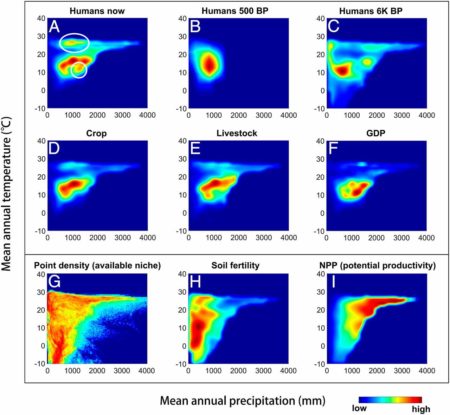- Caution Needed When Predicting Species Threat Status for Conservation Prioritization on a Global Scale. Automated rapid preliminary assessments are all well and good, but…
- WorldFlora: An R package for exact and fuzzy matching of plant names against the World Flora Online Taxonomic Backbone data. Automated rapid taxonomic name checking is all well and good, but…
- Diverse approaches to crop diversification in agricultural research. A review. Too diverse.
- Reinventing quantitative genetics for plant breeding: something old, something new, something borrowed, something BLUE. Retire additive variance.
- Nikolaeva et al.’s reference book on seed dormancy and germination. A treasure trove of data comes to light.
- The reference genome of tea plant and resequencing of 81 diverse accessions provide insights into genome evolution and adaptation of tea plants. Three groups, originating in SW China.
- Taxonomic similarity does not predict necessary sample size for ex situ conservation: a comparison among five genera. The old rule-of-thumb of 50 individuals was not all that far off after all.
- Genetic assessment of the pomological classification of plum Prunus domestica L. accessions sampled across Europe. 93 unique accessions out of 104 across 14 partners. Pretty good, no?
- Genome‐wide association of volatiles reveals candidate loci for blueberry flavor. Can predict taste from genetics.
- Germination ecology of wild and domesticated Ensete ventricosum: Evidence for maintenance of sexual reproductive capacity in a vegetatively propagated perennial crop. Seeds from domesticated material are not much different from the wild ones, except in germination niche.
- Mining maize diversity and improving its nutritional aspects within agro‐food systems. Biofortification is only the beginning.
- Genetic Characterization of Grapevine Varieties from Emilia-Romagna (Northern Italy) Discloses Unexplored Genetic Resources. About half (62) of the unique accessions (122) in a collection (178) are hardly known.
Brainfood: Community seedbanks, Habitat conservation, Maize breeding, NWFP, Neolithic dairy, Straw, Double burden, Species protection, Salty rice, Barley landraces, Scicomm
- Do community seed banks contribute to the social-ecological resilience of communities? A case-study from Western Guatemala. Yes, but they have to move with the times.
- Reconciling global priorities for conserving biodiversity habitat. Only about 20% of high value habitat is protected.
- Genome-wide selection and genetic improvement during modern maize breeding. Breeding in the US and China converged.
- Non-wood forest products in Europe – A quantitative overview. Value of berries, mushrooms etc. amounts to almost three quarters of the value of the wood harvest, ten times the usually estimate.
- Latitudinal gradient in dairy production with the introduction of farming in Atlantic Europe. Was there a taboo against fish?
- Recent Advances in Dual Purpose Rice and Wheat Research: a synthesis. It was worth focusing on straw in breeding, and still is.
- Mapping local patterns of childhood overweight and wasting in low- and middle-income countries between 2000 and 2017. Hotspots in Indonesia, Thailand, southeastern China, Botswana, Cameroon and central Nigeria. Surely dietary diversity could help in those places?
- Is there a peaceful cohabitation between human and natural habitats? Assessing global patterns of species loss. Yes, there is, in very poor and very rich places. Would be interesting to mash up with the above.
- Back to the Wild: On a Quest for Donors Toward Salinity Tolerant Rice. Need to move beyond rufipogon.
- Insights into phylogeny, age and evolution of Allium (Amaryllidaceae) based on the whole plastome sequences. Monophyletic, amazingly, with 3 evolutionary lineages.
- Barley Landraces: Ecological heritage for edaphic stress adaptations and sustainable production. Use landraces as recipients, rather than donors. Before it’s too late.
- Ten simple rules for innovative dissemination of research. More in the breach, I suspect…
Our climate envelope takes a licking
The headlines for coverage of the paper “Future of the human climate niche” will no doubt be about the fact that over the coming 50 years, absent migration or mitigation, 1 to 3 billion people look like they’ll end up living outside the climatic conditions our species has gotten used to over the past 6000 years. But I can’t help thinking about something else. What are those bits of the human climate envelope where there is currently so little agriculture and livestock? I’ve drawn little white ovals around them in this figure from the paper.
Nibbles: Tissue culture, Kenya pulses, Remote sensing, Planetary Computer, CIAT genebank, Faba bean, Cassava breeding, European re-wilding, Russian citrus, Green wine
- Special Issue “Role of Plant Tissue Culture in Agricultural Research and Production.” Deadline: 15 September. This year, I imagine.
- Kenya decolonizing it’s pulse sector.
- And it may be visible from space.
- Somebody mention space? Microsoft is way ahead of you.
- CIAT’s genebank working through lockdown, denies Phaseolus is colonial.
- How about soya then? That’s pretty colonial, surely? Ah, but faba is the new soya. Census takers unavailable for comment.
- Speaking of CIAT and its genebank, the rise and rise of cassava in Asia. And Nigeria? Let the neo-colonialism discourse begin.
- Re-wilding is not colonialism, is it?
- You can grow your lemons underground if it’s cold. Or just for the hell of it, frankly, because why not? Oh, yeah, there’s also breeding.
- Booze goes green. But not so green as to support genebanks.
Nibbles: Native American seeds, Peasant’s Struggle, IWYP, Taxonomy booklet, Phylogenetics booklet, Lost apples, Yak threat, Online mapping, Sampling strategy
- Native Americans are coping with a coronavirus-caused food shortage by seed saving. Among other things.
- On the International Day of Peasant’s Struggle, even.
- IWYP science brief on using wheat wild relatives in breeding.
- Really nice Meise Botanic Garden publication on botanical nomenclature.
- And to complement the above: Phylogenetics in the Genomic Era.
- More old apples found. I’m beginning to think the whole lost apples thing is a scam.
- But losing yaks is a definite possibility.
- Nature Map Explorer is online. Rejoice.
- Sean Hoban on calculating how much to collect and conserve. Without using the above.
